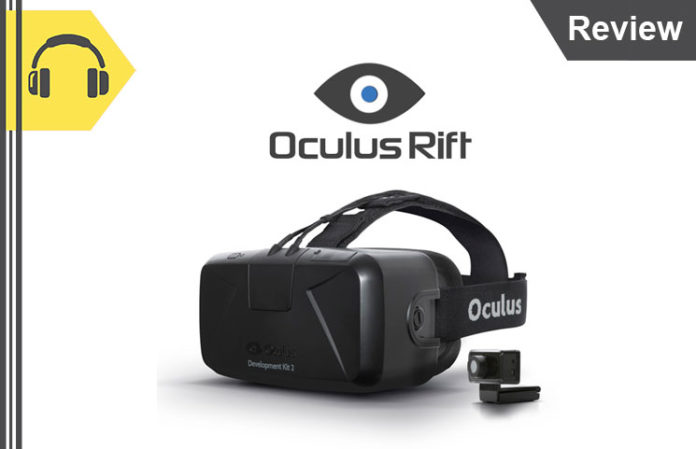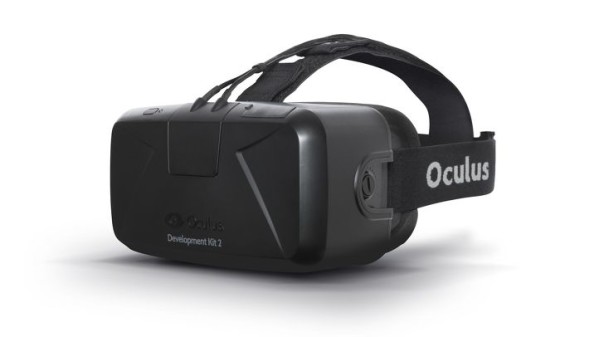
Everything You Need to Know About the Oculus Rift

The Oculus Rift virtual reality headset may be the future of gaming and media. Find out everything you need to know about the Oculus Rift today in our guide.
What is the Oculus Rift?
The Oculus Rift is a virtual reality system that completely immerses you inside a virtual world. The device fits over your eyes like an oversized pair of ski goggles. Inside those goggles are two screens that cause your eyes to see the world around you as a fully explorable 3D space.
While using the Oculus Rift, you control your movement using a gamepad. Or, you can hold two controller devices (called Oculus Touch) in your hands to track your movement.
The Rift also tracks your head movement using a technology called Constellation. That means when you look around, it seems like you’re looking around a virtual world.
Virtual reality headsets have been the much-talked about “future of gaming” for decades. With the Oculus Rift, we finally have a technology that could genuinely transform the way we game and consume media – or at least that’s the idea.
When Will the Oculus Rift Be Released?
The Oculus Rift is scheduled for its first public release in Q1 2016.
History of the Oculus Rift
The Oculus Rift has a brief but interesting history. The device was first invented by Palmer Luckey, who put together the first prototype of the Rift in 2011 in his parents’ garage in Long Beach, California. Luckey was 18.
As the device gained traction and public interest, Luckey would later found the company called Oculus VR to handle development of the device. The first prototype of the Rift was created thanks to help from a Kickstarter campaign.
In its first few years, Oculus VR was an independent company. During these years, the company raised $2.5 million to develop the product.
The Rift has gone through several prototypes. As the prototypes became more and more usable, they were released to the public as development kits in limited numbers.
Development Kit 1 (DK1) was released to the public in late 2012 at a price of $300 while DK2 was released in mid-2014. These kits were designed to give developers the opportunity to create software for the device prior to its general release. However, many tech enthusiasts purchased the Rift with no intention of developing software – they just thought it was really freaking cool.
As of February 2015, Oculus had announced that over 100,000 DK2s had been sold to the public.
The consumer version of the Rift that will be released in Q1 2016 is expected to be similar to the Crescent Bay prototype, which was a modified DK2 unveiled in September 2014. That prototype featured a better resolution than the DK2 along with a lower weight, built-in audio, and 360 degree tracking.
In spite of the fact that the Oculus Rift has not yet been released to the general public, the company is already working on a successor to the Rift. That successor is expected to be released “around 2 years” after the first Q1 2016 release.
On March 25, 2014, Mark Zuckerberg announced that Facebook had acquired Oculus VR. Facebook called Oculus Rift “a new communication platform” that will let users “share unbounded spaces and experiences with the people in your life.”
Why would Facebook be interested in the Oculus Rift? Facebook believes the Rift has enormous social media potential:
“Imagine sharing not just moments with your friends online, but entire experiences and adventures.”
Facebook paid $2 billion in cash and Facebook stock for Oculus VR.
Oculus Rift Tech Specs
The Oculus Rift’s tech specs include:
-OLED display
-2160×1200 total resolution (1080×1200 per eye)
-110 degree field of view
-90 Hz refresh rate
-1x HDMI 1.3 port and 2 x USB 3.0 ports
-Compatible with Microsoft Windows at launch (OS X and Linux support planned for the future)
How to Use the Oculus Rift
As mentioned above, the Oculus Rift is currently only compatible with Microsoft Windows.
To run the Oculus Rift, you’ll need to connect it by cable to a Windows PC. That computer will need to run the Rift software or a Rift-compatible game.
You’ll need a powerful GPU to run the Rift (most guides recommend at least a GeForce GTX 970 or an AMD R9 290) as well as a CPU with at least an Intel i5-4590.
Oculus also recommends having 8GB+ of RAM.
Once you’ve got the necessary hardware, you’ll need to install the appropriate drivers. You can install the Oculus SDK and all appropriate drivers from the Oculus Developers’ website here.
Oculus Rift Controllers
Most Rift games have been designed with a controller in mind. The idea is that you wear the Rift on your head while using the controller with your hands.
Rift actually partnered with Microsoft to include an Xbox One Wireless Gamepad with every Rift.
In addition to the gamepad, Rift users can use something called the Oculus Touch, which is a pair of controllers that act as mirrors for each other. These controllers are held in either hand and are wireless and lightweight. They feature a joystick, buttons, and two triggers. They’re designed to free your hands for greater movement as opposed to simply holding a controller in front of you – which should help you become more immersed in the VR experience.
The controllers will be tracked in a 3D space using the Rift’s constellation system (the same system that tracks your head movement). That means the way in which you move your hands will be reflected in whichever Rift game you’re playing.
Touch controllers also have a system to detect finger gestures that you make when holding the device – so you can point to an object or give a thumbs up to indicate various commands in-game.
The Touch controllers will be sold separately from the Rift and won’t be available until a few months after the Rift is released.
Which Games Have Oculus Rift Support?
Wikipedia has a constantly-updated list of games with Oculus Rift support. You can see that list here. Some of the major well-known games on that list include:
-Alien: Isolation
-Castlevania: Lords of Shadow 2
-DayZ Standalone
-Dirt Rally
-Doom 3: BFG Edition
-Euro Truck Simulator
-EverQuest Next
-The Forest
-Grid Autosport
-Half Life 2
-Il-2 Sturmovik: Battle of Stalingrad
-Minecraft
-Outerra Anteworld
-Project C.A.R.S.
-Second Life
-Star Citizen
-Team Fortress 2
-Surgeon Simulator 2013
-Trackmania 2
-Unreal Tournament
Most of the other games on the Wikipedia list (the ones I didn’t mention above) are specifically designed for virtual reality gaming and remain relatively unknown outside of early Rift adopters (have you ever heard of All Birds Must Die or 3DXChat (NSFW), for example?). Nevertheless, these early developers are paving the way for some cool virtual reality games in the future.
After the release of the Oculus Rift to the public, you can expect the number of VR-supported games to grow widely.
How Much Will the Oculus Rift Cost?
Oculus founder Palmer Luckey has not yet announced how much the Oculus Rift will cost when it’s launched to the general public.
Many people expected the device to cost around $300 or $350. In September 2015, however, company founder Palmer Luckey announced that the device would cost more than $350. One interviewer asked Luckey if the device was going to cost $350. Here’s what Luckey said:
“You know, I’m going to be perfectly honest with you. We’re roughly in that ballpark… but it’s going to cost more than that. And the reason for that is that we’ve added a lot of technology to this thing beyond what existed in the DK1 and DK2 days.”
We’ll let you know exactly how much the Oculus Rift will cost as soon as we know. In the meantime, you can expect more news about the Oculus Rift to continue to be released in the leadup to the device’s release in Q1 2016.






